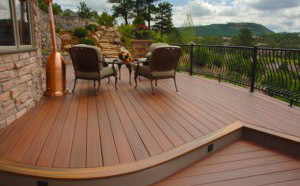NEED ENERGY EFFICIENT WINDOWS?
November 16, 2019THINGS TO KNOW WHEN CHOOSING SIDING
November 18, 2019If you are in search of some deck building materials for your decking, here is some important information for you. Basically, there are three main types of deck building materials. Just like any other construction products, each of these decking materials has their own advantages and disadvantages. Here are some of the popular decking materials and their list of pros and cons.
Pressure Treated Wood
These are specially treated wood that can be used for decking purposes. Generally, pressure treated wood is the most popular and affordable type of outdoor deck material available in the market. Most outdoor deck contractors prefer these materials. However, if the wood has not been completely dried, it may crack easily.
Natural Wood
Of course, it is the most traditional type of material used for decking. Unlike pressure treated wood, this variety of deck materials are sustainable and durable. However, consumers will have to pay approximately two to three times more the price of pressure treated wood. Still, this is the next affordable option after pressure treated wood according to many Philadelphia deck builders.
Wood Plastic Composite Materials
This is the best and most exquisite variety of decking materials available. These artificially treated wood plastic composite materials are highly durable as they contain plastic. This makes them more resistant and durable. Composite materials are resistant against moisture and insects. The major disadvantage of this decking material is their cost. In addition, these materials don’t seem natural when touched. In fact, many consumers don’t like the unnatural feel of these decking materials.
If you would like to know more about how TriCounty Exteriors can build your dreams please contact us.


